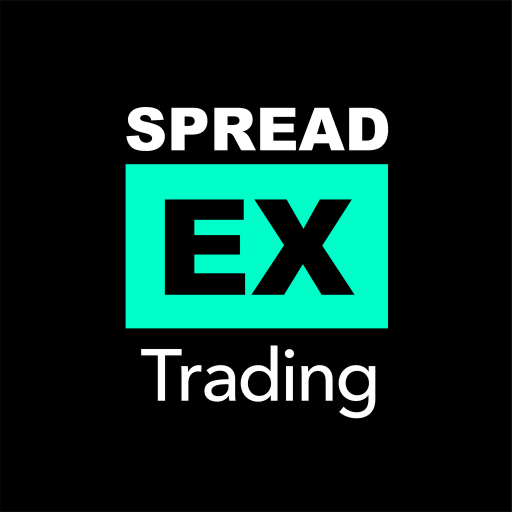If you are looking for a broker, should you be considering XM or Spreadex? Which is the best broker of the two? The answer is that it depends on what you need from your broker, as each one offers different features.
XM has an excellent education portal, free withdrawals and spreads starting at 0.0 pips. Spreadex, however, has its own advantages, including a huge choice of tradeable instruments and the fact that there is no minimum deposit.
When you compare XM vs Spreadex, you will notice that both brokers have a lot to offer, and are generally considered to be reputable firms.

Risk Warning: CFDs are complex instruments and come with a high risk of losing money rapidly due to leverage. 74.89% of retail investor accounts lose money when trading CFDs with this provider. You should consider whether you understand how CFDs work and whether you can afford to take the high risk of losing your money.



Spread bets and CFDs are complex instruments and come with a high risk of losing money rapidly due to leverage. 64% of retail investors lose money when trading spread bets and CFDs with this provider. You should consider whether you understand how spread bets and CFDs work and whether you can afford to take the high risk of losing your money. For professional clients, spread betting and CFD trading can result in losses larger than your initial stake or deposit.


Calculating trading costs is tricky because every broker has its own way of making a profit and a straight comparison is rarely possible. In the case of XM vs Spreadex, XM has potentially tighter spreads. However, to get the lowest spreads, you will need to open an account that also comes with a commission per trade.
Both XM and Spreadex offer free deposits and withdrawals. One advantage of Spreadex when it comes to costs is that it doesn’t charge an inactivity fee, so it may be better for hobby traders and newer traders who do not yet know if they are going to be actively trading on a consistent basis.
If you open an XM Zero account, spreads on some instruments will be as low as 0.0 pips, but you will pay a standard commission of £3.50 per $100,000 traded. Spreadex also offers competitive spreads, but they start at around 0.4 pips. With XM, the different account types offer different fees and trading conditions, so there is a little more choice and ability to customise your account. Spreadex keeps things simple with just one type of trading account, which means that it is easy to work out what your costs will be.
Both brokers are based in Europe, so whether you trade with Spreadex or XM, you will be offered leverage up to a maximum of 30:1. This is the highest level of leverage permitted by European regulators, so you should, in fact, be suspicious if a UK or EU-regulated firm is offering you more than this.
It is very easy to open an account with either Spreadex or XM. With Spreadex, there is only one account offering, which means that the same fees, features and spreads are available to traders at all levels regardless of the size of their initial deposit and account balance. At XM, you can set up a Standard, Micro, Zero or Ultra Low account. At both brokers, your initial registration will take just a few minutes, and your account should be up and running in less than one business day.
One advantage of XM vs Spreadex is that XM offers a risk-free demo account, with up to $100,000 of virtual funds, so you can practice trading under realistic conditions and find your way around the platform before opening a live account. Spreadex does not currently offer a demo account, so if this is an important feature for you, then XM is better than Spreadex.
Spreadex uses its own proprietary web-based trading platform, which is also available for mobile. It is well-regarded by customers, with fast execution speeds and excellent charting features. Spreadex does not, however, offer MT4 and MT5 trading or a copy trading facility. XM offers MT4 and MT5 trading, as well as the copy trading platform XM Mirror Trader. This means that XM may be better for you if you already use and like MetaTrader products, or if the ability to copy trade is important to you.
XM is a highly accessible platform, allowing traders to open an account with a deposit of as low as $5. Spreadex actually has no minimum deposit, allowing traders to start with whatever amount suits them best. In effect, then, both brokers are highly suitable for new traders, even if they have very little to invest to start with.
XM provides trading in more than 55 currency pairs and offers a total of more than 1,000 instruments across multiple asset classes, making it a great multi-asset brokerage, though it does not currently offer cryptocurrencies. Spreadex has an impressive choice of assets, with a total of more than 10,000 instruments, including major and minor currency pairs and CFDs for shares, indices, ETFs, bonds and commodities. Spreadex also offers cryptocurrencies, though how accessible crypto trading is will depend on the jurisdiction you live in. In the UK, for example, the crypto trading is only available for professional traders.
Both brokers are licensed, regulated and safe to trade with, but your choice will depend on your own personal needs and requirements. XM is a good choice for MT4 and MT5 traders, as well as those who are interested in copy trading, and new traders will appreciate the demo account and the education portal. Spreadex offers a bigger range of assets and a simple membership model with just one account type for everyone, along with one simple, user-friendly trading platform. As always, take a close look at the aspects of the broker that are important to you, given the type of trading you are interested in, the techniques you use, and the instruments you want to trade.